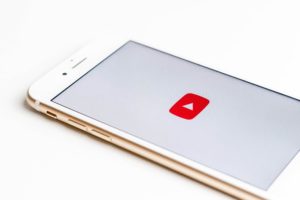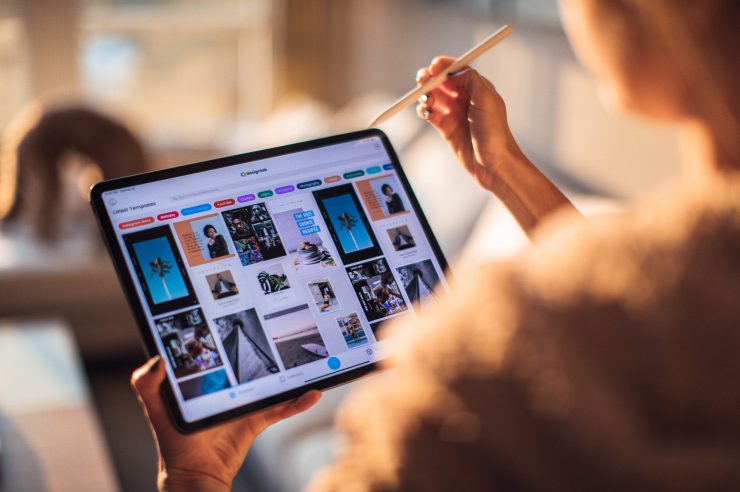Most of us have forgotten February 1, 2004. Janet Jackson, however, surely remembers the infamous Superbowl XXXVIII and the unfortunate wardrobe malfunction that took place during the halftime show. The teams who threw a ball and tackled one another are all but forgotten, but Ms. Jackson’s name, image, and performance broke records, becoming the most searched terms for 2004 and 2005, as well as the most-searched event over one day.
The advent of the social media influencer

Former Paypal employees Jawed Karim, Steve Chen, and Chad Hurley later said that their inability to locate clips of the slip became one of the inspirations to create YouTube. YouTube is a video-sharing site allowing users to upload and share video content. The activation of the domain name www.YouTube.com came in early 2005. The site’s growth exploded in subsequent years. In 2006, the site announced that the site was receiving 100 million video views per day. By May 2011, 48 hours’ worth of content was being uploaded every minute. In January 2012, it had jumped to 60 hours’ worth per minute.
“The goal is to make yourself look nothing like yourself.”
You’re probably thinking – “Gee, that’s an awful lot of cat videos.” But in that short the stage had been set for a major shift at the cultural level. It had become possible for anyone and everyone to connect with an audience. Jenna Marbles made a video advising us how to trick people into thinking that we’re good-looking, and over 69,000,000 people tuned in to hear what she had to say. Justin Bieber was signed to RBMG Records in 2008 after his cover song videos were discovered by a talent manager. He currently has over 42 million subscribers on the platform. Youtube became a way for users to connect with people talking about the things that were relevant to them, in a way that felt more personal than any other format that had come before it – and this is what paved the way for the modern Social Media Influencer.
Like, comment and subscribe!
So, what is a Social Media Influencer? In short, it’s anybody online, in virtually any industry, category, or topic, who has a lot of followers and can sway those followers’ opinions on goods, services, or topics.
The kicker is that this sway isn’t coming in the annoyance of a commercial break, the repetitiveness of a radio jingle, or blocky letters on a billboard we swoosh past on our commutes. It often feels like a friendly recommendation or a favor to someone we like. Many users buy products or services promoted by their favorite personalities, simply because it helps them. I’ll admit, I’ve purchased products promoted by my favorite influencers for no other reason than wanting to support their channel.
YouTube’s algorithms have been the subject of controversy in recent years due to the demonetization of certain categories of content deemed “mature” or “adult” in nature. The algorithm’s sweeping terms extended to virtually all creators dealing in LGBTQ+ issues, whether or not they featured any explicit content. Many followers of these channels responded by purchasing merchandise, or becoming Patreon (a platform allowing fans to donate to their favorite creators monthly, often in exchange for exclusive content) subscribers, at the request of the content creators. Though this is a somewhat extreme example, it does illustrate the capacity for personally resonant content to fuel monetary conversion.
Thankfully, influencers’ incomes are no longer limited to AdSense dollars. As various media-sharing platforms grew, the attention being paid to internet personalities caught the eye of major companies, who were eager to convert our subscriptions into profit. KingBach of Vine fame reportedly charged companies like Samsung, BET, and others $1,000 per 100,000 followers for promotion in his videos during Vine’s heyday. He would feature their product in the video in some fashion, and they’d pay the premium. If it was Coca-Cola, for example, there might be a can of Coke featured somehow.
With over a million subscribers, a six-second Vine would have made KingBach $10,000.
Swipe up!

While YouTube was a pioneering platform in the field, Instagram reigns supreme in 2019 and is touted by over 89% of marketers as the most important vehicle for influencer marketing. Close to a third of influencer content comes on user Stories. Stories are short-form content that expires after 24 hours. Instagram recently added the capability for users to “swipe up” to link to outside content from an Influencer’s story. This makes Stories incredibly easily to convert into traffic and sales. A story might say, “Check out this new foundation I’m wearing. Swipe up. Use my name at checkout for a 50% discount.” It’s simple for the consumer to be funneled right to the product page where they can buy whatever item is being promoted.
Why you should care
Ok, we get it – our cultural landscape has changed forever. We’re more connected than we have ever been, and yet we live in the Age of Loneliness. Influencer marketing is about the monetization of the search for human connection – and it’s quickly becoming a marketing method that we can’t afford to ignore.
Data shows that 90% of consumers trust recommendations, but only 30% take an ad’s word at face value. The revolutionary aspect of influencer marketing is that we can leave behind the gimmicky, overt nature of the de facto advertisement in lieu of something that speaks to your audience on a deeper, more personal level.
One of these influencers is not like the other
So, you’re ready to do some influencer marketing – but where to start? You can pretty much shake your iPhone and have about sixteen potential influencers fall out. Even soeven if an influencer is making good content, they still won’t always be a good fit for your brand. With a bit of vetting, you can weed out the potential candidates and find an influencer who will connect with your brand.
There are three main considerations in the landscape of influencer marketing:
- Reach
- Relevance
- Resonance
The long arm of the influencer

Reach is pretty simple. An influencer’s reach is the number of potential users they can put their content in front of. Numerically speaking, the total number of accounts who follow an Influencer make up their reach.
Though you’d think seeking out the Influencers with the highest follow numbers would be the way to go, data suggests that “micro-influencers,” or influencers with between 5,000 and 25,000 followers, often have higher levels of engagement than more famous personalities. To put it in perspective – are you more likely to get a retweet from somebody like Kylie Jenner, who may never see your content? Or from a small-scale vlogger who manages their account themselves?
Does she even GO here?
No matter how many followers an Influencer reaches, for it to matter to your bottom line, they’ve got to be the right followers. In effect, an Influencer’s reach is meaningless if their audience isn’t relevant to yours. Target social media influencers who are in your field. If you’re in the health and fitness industry, names like @SmashWerx or @Primal.swoledier would be appropriate to investigate, but if you’re making luxury cupcakes, your ad dollars would likely be better spent elsewhere.
Resonate with your audience
It isn’t enough for your chosen Influencer to simply promote the same category of items as your audience consumes. Their message has to reach them on a personal level. They must be seen as credible and be trusted by the followers of your brand. Influencer marketing works best when the audience, for whatever reason, feels a personal connection to the Influencer and takes their recommendations to heart.
Whether an influencer’s message will resonate with your audience or not is a bit more nuanced criteria. It requires a deep knowledge and understanding of who your brand speaks to. Content should align not only with the category of your brand, but also with its values, voice, and personality.
How to catch a social media influencer
Once you’ve found an influencer you like, there are a number of ways your brand can begin a relationship with that person.
- A simple google search
- Comb through relevant tags on your social media platform
- Dedicated tools like Buzzmo, Zoomph, or Izea help connect brands with influencers
Time to get influencing!
Your influencer can start wooing your followers in a variety of ways. While their method of choice will likely relate directly to the reasons they are relevant to your brand, here are a few commonly used methods:
- Gifting and giveaways – Arrange a giveaway with your influencer. Send them a product, and they will arrange a contest with their followers. The exposure that comes with your audience vying for your product can be huge.
- Sponsored posts – Send your influencer your product, and ask them to promote it on their channel or account. A word to the wise, though – don’t just send product without a conversation first, as they may not be as gracious with their influence as you’d hope.
- Video Content – If your influencer makes video content, they can be very appealing from a conversion standpoint. Videos are the most-shared and most easily consumed media forms on the internet, and they are arguably one of the better ways to grow your fanbase.
Final thoughts
The appeal of social media influencer marketing can hardly be ignored. The numbers behind the strategy are simply too good to look past. The right influencer can draw your followers into a more meaningful conversation with your brand.
Try different strategies to determine the route that works best for your brand. It may take a few tries to nail down a symbiotic relationship for yourself and your influencer. But once it clicks, you’ll enjoy a huge boost to your brand recognition.
